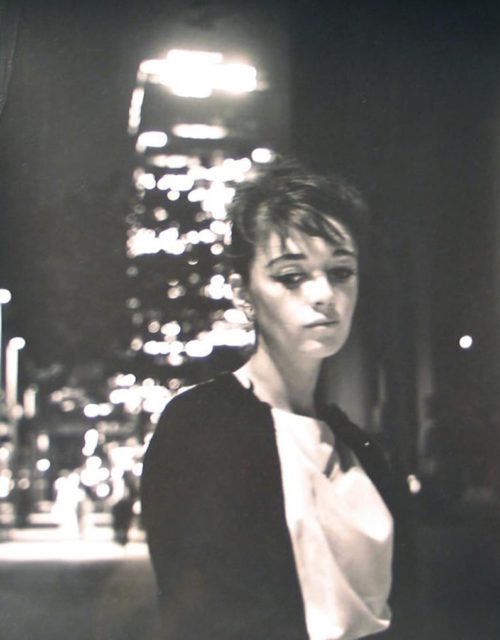Philippe Halsman (American, 1906-1979)
Anna Maria Alberghetti, 1961
Photograph
Gift of F.A.P.A. II
Philippe Halsman’s passion for photography began at age fifteen when he found an old camera of his father’s in the attic. He bought glass plates with money from his allowance and taught himself how to develop them in the bathroom of his home. As a young man, he studied engineering in Dresden, Germany, but after a trip to Paris for his sister’s wedding, he decided to abandon his degree and move to Paris to pursue photography. He wanted to fill a void he saw in the body of popular photography in Paris, which he called “diffused, pretentious, and artsy.” He was fascinated with the realism of portraiture, writing “every face I see seems to hide – and sometimes fleetingly to reveal – the mystery of another human being” (Halsman).
Chasing that mystery, Halsman became a prolific photographer of celebrities. His black-and-white portrait of Anna Maria Alberghetti is no typical celebrity headshot. Alberghetti was an Italian-American actress and singer who became a U.S. citizen the year the portrait was taken. A Broadway actress and movie star, she was very much in the public eye, a regular guest on The Ed Sullivan Show, and a two-time cover girl for Life magazine.
Bold eyeliner and dark eyebrows make up Alberghetti’s eyes like they might for a glamour shot, but her tousled hair and the absence of lipstick reveal the camera has caught her in a private moment. She neither looks into the camera nor stands facing it. Does she even know she’s being observed?
Though photographed on a city street with the lights of a skyscraper shining behind her, I am struck by how alone Alberghetti seems. Shadow surrounds the softly out of focus actress, and her black sweater convinces us she could dissolve into the night around her. What might be another dark figure on the sidewalk stands blurry so far behind Alberghetti that we can’t tell if it is approaching or receding, and with her back turned, she does not notice either way. Even the communion between subject and photographer is broken by Alberghetti’s sightline, cast forlornly down and to the right of the camera.
In 2020, art that represents loneliness is more stirring than ever. Were the subject wearing a mask, we might be looking at a COVID-era portrait: alone in public. In 1961, entering the second Golden Age of Hollywood, this glimpse of the quiet humanity of a starlet struck right at the heart of the hidden mystery Halsman strove to reveal with his portraiture. I think we do well to be reminded of that humanity today.
Work Cited
Halsman, Philippe. “Autobiography.” Philippe Halsman, 2015. http://philippehalsman.com/halsman/autobiography/. Accessed 23 September 2020.
Caroline Webster ’21

